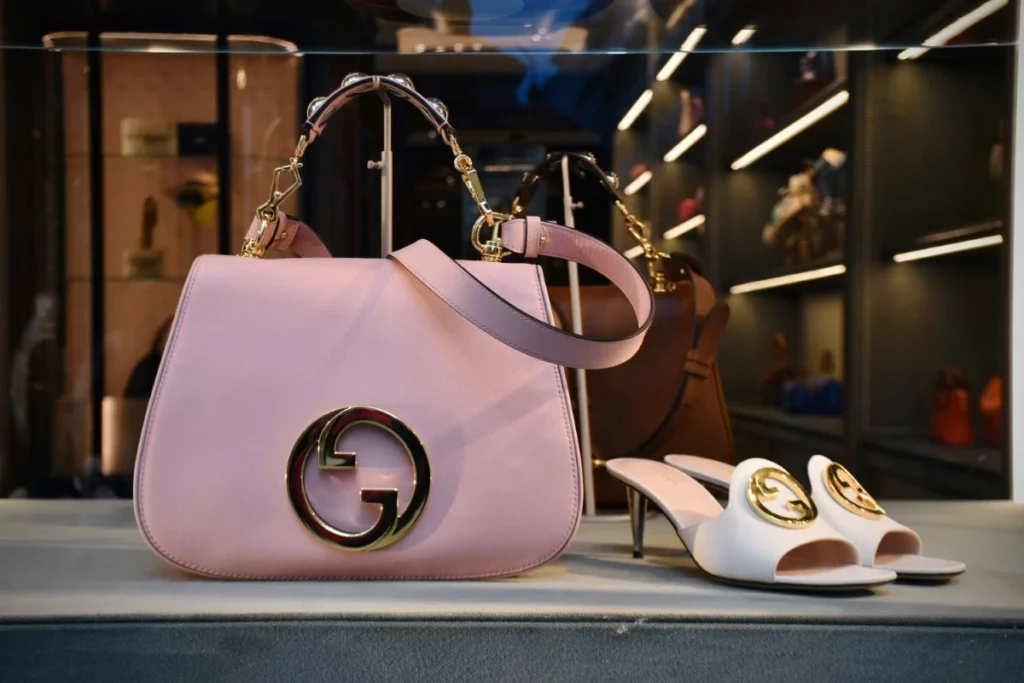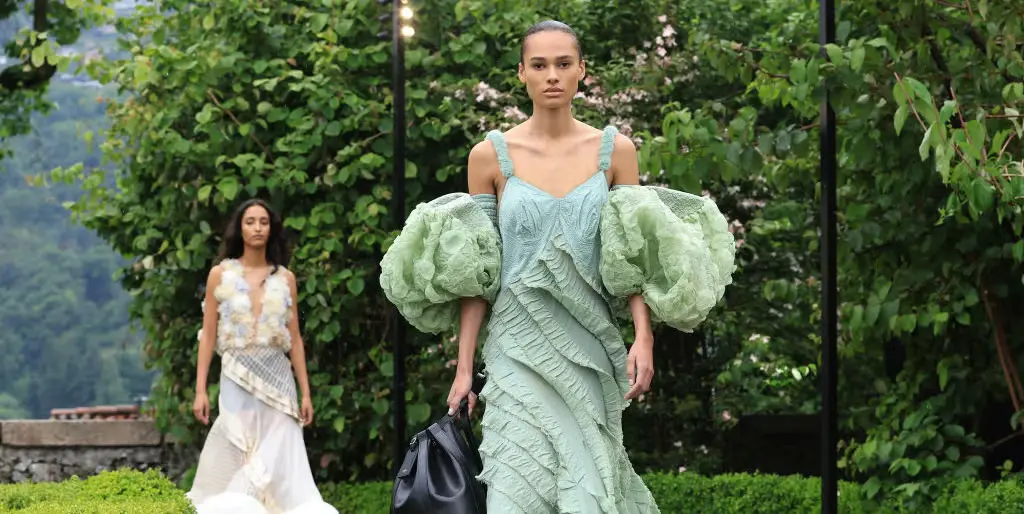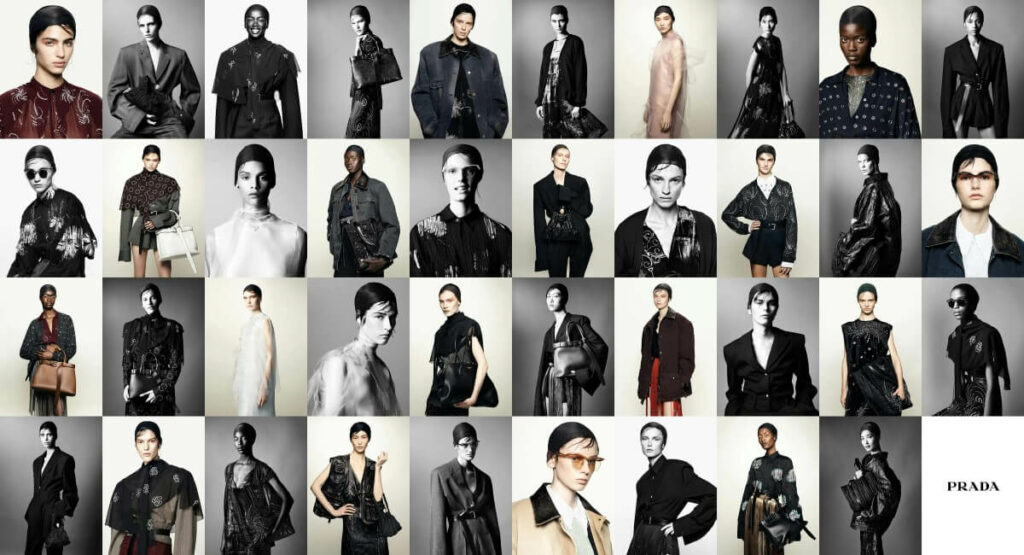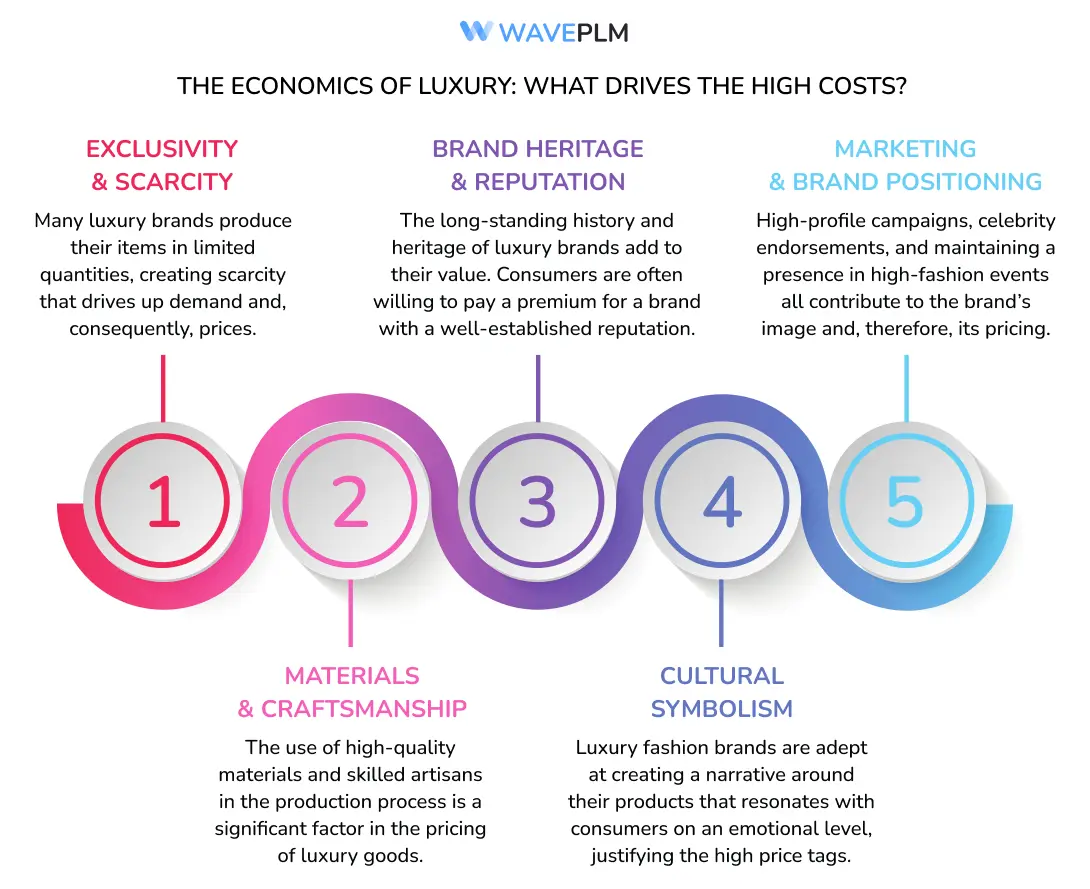
The most expensive fashion brands – unsplash.com
In the realm of high fashion, the most expensive fashion brands captivate consumers with their allure of exclusivity, superior craftsmanship, and status symbolism. But what makes these brands so expensive, and is the cost justified by quality, or are you paying for the brand name alone? This article will delve into a luxury brand comparison, analyzing apparel pricing, and exploring the balance of quality vs. cost in high-end fashion.
The Pinnacle of Fashion: Understanding Luxury Brands
Luxury fashion brands are more than just labels; they represent a lifestyle, a social status, and a cultural symbol. Brands like Louis Vuitton, Chanel, Gucci, and Hermès are not just selling clothing or accessories – they are selling a piece of a legacy. These brands are renowned for their high-quality clothes, which are central to their appeal. The allure of owning something from one of the most expensive clothing brands in the world lies in the promise of superior quality, exclusivity, and the prestige that comes with it, as well as access to their curated collections that showcase the breadth of their product lines.
However, it’s essential to distinguish between what you’re genuinely paying for and does it is worth those higher prices. Many luxury brands have built their reputation on designing for women seeking elegance and sophistication. Is it the craftsmanship, the materials, the exclusivity, or merely the brand name? Let’s break it down.
A Brief History of Luxury Fashion
Luxury fashion’s story is woven through centuries of style, innovation, and exquisite craftsmanship. The origins of luxury fashion can be traced back to the grand courts of 17th and 18th century Europe, where royalty and aristocrats in Paris and beyond commissioned bespoke clothing and accessories from the most skilled artisans. These early expressions of haute couture set the standard for what would become the world’s most coveted fashion.
As the Industrial Revolution transformed society, luxury fashion began to reach a broader audience, but the essence of exclusivity and premium materials remained. The late 19th and early 20th centuries saw the birth of iconic fashion houses like Chanel, Dior, and Hermès – each redefining luxury with their own vision. Coco Chanel revolutionized women’s style with the little black dress and the timeless Chanel bag, while Dior brought elegance and femininity to haute couture, and Hermès became synonymous with exquisite leather goods and handbags.
Today, luxury fashion is a global phenomenon, with high end brands like Gucci, Louis Vuitton, and Prada offering a dazzling range of expensive pieces, from meticulously crafted accessories to statement-making gowns. The enduring appeal of luxury fashion lies in its commitment to quality, the use of the finest materials, and the artistry of its craftsmanship. Whether it’s a classic Chanel bag or a new line of Hermès handbags, these brands continue to set the standard for what it means to own a piece of true luxury.
1. Louis Vuitton: The Epitome of Timeless Luxury
Louis Vuitton is synonymous with luxury. Established in 1854, the brand has a long-standing history of creating high-quality leather goods, particularly its iconic luggage and handbags. The brand’s monogram is instantly recognizable, and owning a Louis Vuitton item is often seen as a symbol of wealth and status.

Louis Vuitton – harpersbazaar.com
Quality vs. Cost
When you purchase a Louis Vuitton bag, you’re paying for more than just a bag. The brand prides itself on using the finest materials and employing skilled artisans to ensure every product is perfect. The leather is often sourced from the best tanneries, and the attention to detail in stitching and craftsmanship is meticulous.
However, part of the cost also goes towards the brand’s marketing and the prestige of the Louis Vuitton name. While the quality is undeniably high, the brands like Louis Vuitton pricing is also influenced by its status as a luxury brand. A significant portion of what you pay is for the fashion brand’s history, heritage, and the social prestige it confers.
2. Chanel: The Quintessence of Elegance
Chanel is another giant in the luxury fashion world, known for its classic designs and elegant aesthetics. The brand, founded by Coco Chanel in 1910, revolutionized women’s fashion with its timeless designs, such as the Chanel suit and the little black dress. Today, people worldwide recognize Chanel for its iconic products, such as the Classic Flap bag and No. 5 perfume, as well as its haute couture, ready-to-wear collection, and luxurious clothes.
Chanel’s impact on women’s fashion is profound, as the brand’s clothes have redefined elegance and sophistication for generations. The brand’s reputation for exclusivity and prestige is reinforced by the unique experience of shopping at a Chanel shop or visiting a Chanel store, where the atmosphere evokes a sense of timeless elegance and modern sophistication. Chanel’s collection continues to set the standard for luxury, and chanel’s history, products, and prices contribute to its status as a symbol of enduring style and innovation.

Chanel – designscene.net
Quality vs. Cost
Chanel’s pricing reflects its commitment to quality and craftsmanship. The brand uses luxurious materials, including high-quality fabrics and fine leathers, often sourcing them from the most prestigious mills in Europe. Additionally, skilled artisans who undergo rigorous training meticulously construct Chanel products, particularly its handbags.
However, like Louis Vuitton, a portion of what you pay is for the brand name and the association with Chanel’s legacy of elegance and sophistication. The Chanel logo itself has become a symbol of high status, and owning a piece from Chanel is often more about what it represents than the actual item. Chanel’s higher price tag reflects both its exceptional quality and its status as a luxury icon. Rising prices have made Chanel items even more desirable as investment pieces, with some Chanel bags selling for several thousand dollars on the primary and resale markets, highlighting the significant amount of money required to purchase them.
Brands Comparison: Chanel vs. Louis Vuitton
Chanel is known for its timeless elegance and classic designs, particularly in haute couture and women’s fashion, while Louis Vuitton is celebrated for its luxury leather goods and innovative travel accessories. Chanel emphasizes sophistication and femininity, whereas Louis Vuitton combines practicality with high-end fashion, making it a favourite for luxury luggage and handbags. Many of their iconic bags are often sold at the same price or similar price points, highlighting their comparable market positioning and investment value.
3. Hermès: The Apex of Exclusivity
Hermès is arguably the most exclusive of the luxury fashion brands, with its products often having long waiting lists. The brand, established in 1837, is best known for its iconic products, particularly the Birkin and Kelly bags, which have become the ultimate status symbols. The Kelly bag was named after Grace Kelly, who famously carried it and helped elevate its iconic status.
The Birkin bag originated after a chance encounter between singer Jane Birkin and Hermès CEO Jean-Louis Dumas, leading to the creation of this legendary handbag. Both Hermès and Chanel are leading luxury brands, each with distinct histories and signature items that define their prestige in the fashion world.
Quality vs. Cost
Hermès takes pride in its craftsmanship, with each bag being handmade by a single artisan. The leather material used is of the highest quality, and the attention to detail is unparalleled. The process to create a single Hermès bag can take up to 18 hours, and the artisans undergo years of training.
The exclusivity of Hermès also plays a significant role in its higher price tag. The brand’s strategy of limited production and the resulting scarcity drives up demand, allowing Hermès to command high prices—many Hermès bags can sell for tens of thousands of dollars on the secondary market. Numerous Hermès bags have been sold for significant profit, making them highly sought-after investment pieces. Owners often choose to sell their Hermès bags to realize a profit, especially as market values rise.
To maintain their value, it is important to store Hermès bags in a dust bag when not in use. Additionally, secure shipping is crucial when buying or selling Hermès bags on the resale market to ensure the item arrives safely. Here, the cost is justified by both the quality and the rarity of the items, though the brand name certainly adds to the price tag.
4. Gucci: The Intersection of Tradition and Modernity
Gucci is known for its bold designs and has become a favorite among younger luxury consumers. Founded in 1921, the brand combines traditional craftsmanship with modern trends, creating products that appeal to both classic and contemporary tastes.

Gucci – models.com
Quality vs. Cost
Gucci maintains a high standard of quality, using premium materials and skilled craftsmanship. The brand is known for its innovative designs and the ability to stay relevant in the ever-changing fashion world. The quality of Gucci products is high, but the brand also benefits from its strong marketing and the appeal of its logo, which has become a symbol of youthful luxury.
The cost of Gucci products reflects both the quality of the materials and the craftsmanship, as well as the brand’s ability to stay at the forefront of fashion. However, as with other luxury brands, a portion of what you pay is for the name and the status associated with it.
While Gucci is recognized for its boldness, other luxury brands like Balenciaga are celebrated for their avant-garde designs, which appeal to those seeking a more unconventional and edgy aesthetic.
5. Prada: The Vanguard of Minimalist Chic
Prada is known for its minimalist designs and high-quality craftsmanship. Founded in 1913, the brand has established itself as a leader in luxury fashion, particularly in leather goods and ready-to-wear.

Prada – lofficielibiza.com
Quality vs. Cost
Prada crafts their products from the finest materials, and the brand is known for its understated elegance. The pricing reflects the quality of the materials and the craftsmanship, but as with other luxury brands, part of what you’re paying for is the brand name and the associated prestige.
Prada’s pricing also reflects its status as a trendsetter in the fashion industry. The brand’s ability to consistently innovate and influence fashion trends adds to the perceived value of its products.
The Resale Market: The Second Life of Luxury
The resale market has become a dynamic force in the luxury fashion world, offering both seasoned collectors and new enthusiasts a way to access high-end pieces at more accessible prices. Many brands, including Chanel and Hermès, have seen their products—especially iconic items like the Chanel classic flap bag—become highly sought after on the secondary market. In fact, Chanel bags tend to hold their value remarkably well, with some even appreciating over time, making them popular investment pieces.
This surge in the resale market is fueled by the rise of online platforms and social media, which have made it easier than ever for buyers and sellers to connect across the globe. For example, a pre-owned Chanel bag or Hermès Birkin can command high prices, sometimes rivalling or exceeding their original retail value. Many brands are now recognizing the importance of the resale market, launching their own resale initiatives or partnering with trusted third-party platforms to ensure authenticity and quality.
For customers, the resale market offers a chance to own luxury fashion at a lower price, discover rare or discontinued pieces, and participate in a more sustainable approach to shopping. As the fashion world continues to evolve, the resale market is proving to be an essential part of the luxury ecosystem, giving classic bags and accessories a coveted second life.
The Economics of Luxury: What Drives the High Costs?
Understanding why these most expensive brands command such high prices requires a look into the economics of luxury fashion. Several factors contribute to the pricing of these brands:
- Exclusivity and Scarcity: Many luxury brands produce their items in limited quantities, creating scarcity that drives up demand and, consequently, prices. This exclusivity makes owning a piece from these brands more desirable.
- Brand Heritage and Reputation: The long-standing history and heritage of luxury brands add to their value. Consumers are often willing to pay a premium for a brand with a well-established reputation.
- Marketing and Brand Positioning: Luxury brands invest heavily in marketing and brand positioning. High-profile campaigns, celebrity endorsements, and maintaining a presence in high-fashion events all contribute to the brand’s image and, therefore, its pricing.
- Materials and Craftsmanship: The use of high-quality materials and skilled artisans in the production process is a significant factor in the pricing of luxury goods. However, it’s essential to note that while quality is a factor, it is often not the only reason for the high cost.
- Cultural Symbolism: Owning a luxury item often goes beyond the physical product; it’s about the cultural symbolism and the statement it makes. Luxury fashion brands are adept at creating a narrative around their products that resonates with consumers on an emotional level, justifying the high price tags.

Luxury Fashion and Sustainability
Sustainability has become a defining issue in the luxury fashion industry, as both brands and consumers reckon with the environmental and social costs of high-end production. The fashion world is increasingly aware that true luxury must go hand in hand with responsibility, prompting many brands to rethink their approach to materials, manufacturing, and supply chains.
Leading luxury brands like Chanel and Hermès are making significant strides toward sustainability. Chanel has introduced eco-friendly lines, including perfumes crafted with responsibly sourced ingredients, while Hermès has developed a range of sustainable leather goods that minimize waste and prioritize ethical sourcing. These high end brands are investing in innovative materials and greener production methods, setting new standards for the luxury market.
Despite these advances, the industry still faces challenges, from the use of exotic leathers to the energy-intensive nature of traditional craftsmanship. However, as more customers demand transparency and eco-consciousness, many brands are embracing sustainability as a core value. The future of luxury fashion will likely be defined by those who can balance exquisite quality with a genuine commitment to the planet, ensuring that luxury remains desirable for generations to come.
The Importance of Authenticity
In the luxury fashion world, authenticity is everything. With the proliferation of counterfeit goods, especially in popular categories like Chanel bags and Hermès leather goods, ensuring the genuineness of a purchase has never been more critical. Luxury brands have responded by implementing sophisticated anti-counterfeiting measures, such as holograms, unique serial numbers, and signature packaging details.
For shoppers, especially those buying from the secondary market, vigilance is key. When considering a Chanel bag, for example, it’s important to inspect the stitching, hardware, and interior lining—hallmarks of the brand’s exquisite craftsmanship. Shopping at a Chanel boutique or through authorized retailers offers peace of mind, but if you’re exploring the resale market, always work with reputable sellers who can provide proof of authenticity and provenance.
By prioritizing authenticity, both brands and customers help preserve the value and prestige of luxury fashion. Whether you’re investing in a new Hermès bag or searching for a vintage Chanel piece, knowing your purchase is genuine ensures that you’re truly experiencing the artistry, quality, and heritage that define the world’s most coveted brands.
Quality vs. Cost: Is It Worth It?
When it comes to luxury fashion, the question of quality vs. cost is a complex one. On one hand, these brands offer products made from the finest materials, with unparalleled craftsmanship and attention to detail. On the other hand, a significant portion of the price is for the brand name and the social status it confers. Purchasing luxury fashion requires a significant amount of money, making it an investment for many consumers.
For many consumers, the decision to purchase from the most expensive fashion brands is less about practicality and more about the experience and the statement it makes. Owning a Louis Vuitton bag or a Chanel suit is about more than just the item itself; it’s about being part of a select group, sharing in the brand’s history, and enjoying the unique sense of belonging and prestige that comes with it.
Final Thoughts: What Are You Really Paying For?
In conclusion, when you purchase from one of the most expensive fashion brands, you’re paying for a combination of factors: high-quality materials, exceptional craftsmanship, exclusivity, brand heritage, and the cultural symbolism associated with the brand. While the cost of these items is undoubtedly high, for many, the intangible benefits — status, prestige, and the experience of luxury — justify the price.
Ultimately, whether or not the cost is worth it depends on what you value. If quality and craftsmanship are your priorities, these brands offer some of the best in the world. If you’re more interested in the status and exclusivity that come with luxury fashion, then the price is a necessary part of the experience. Either way, understanding what you’re really paying for can help you make a more informed decision the next time you’re considering a luxury purchase.
By exploring the balance of quality vs. cost in high-end fashion, this article provides a comprehensive luxury brand comparison, offering insights into what drives the high prices of these iconic brands. Whether you’re a fashion enthusiast or just curious, this analysis gives you a better understanding of the value behind the world’s most expensive fashion brands.




